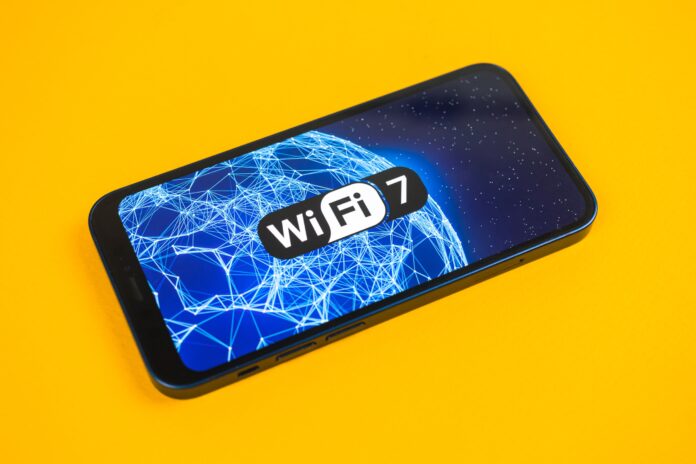The Wireless Broadband Alliance (WBA) today released a new report called Get Ready for Wi-Fi 7: Applying New Capabilities to the Key Use Cases. The report is led by WBA members Broadcom, CableLabs, Cisco and Intel and looks at Wi-Fi 7’s most impressive features and the applications it will support. Bruno Tomas, WBA’s chief technology officer, spoke with RCR Wireless News ahead of the report’s public release to detail the highlights and share what the Alliance is focusing on as the end of the year approaches.
Tomas first reiterated some of Wi-Fi 7’s most notable features, which include support of 320 MHz transmissions — double the 160 MHz of 802.11ax — and the use of higher modulation orders, optionally supporting 4096-QAM, up from 1024-QAM in 802.11ax. Wi-Fi 7 is also referred to as Wi-Fi Extremely High Throughput as result of its ability to support up to 30 Gbps throughput, roughly three times faster than Wi-Fi 6.
In addition, while Wi-Fi 6 introduced OFDMA, which is a traffic scheduling technique that results in significant speed gains in both crowded and uncrowded environments, Wi-Fi 7 has Multi-Link Operation (MLO). This feature is unique to Wi-Fi 7 and allows for the rapid switching between the different Wi-Fi bands, enabling seamless switching between the links to move critical applications to higher bands, as well as aggregate the links where and when needed.
Excitement for Wi-Fi 7 has been building since the introduction of the 6 GHz band for unlicensed Wi-Fi use by the Federal Communications Commission (FCC) in 2020. That’s because, unlike any other previous generation of Wi-Fi, Wi-Fi 7 was built from the ground up with this new, pristine spectrum in mind. “The availability of the 6 GHz spectrum represents a significant milestone in Wi-Fi technology. This new spectrum offers faster data speeds, increased capacity, reduced interference, and better latency,” stated the WBA report.
According to Tomas, the Wi-Fi industry is entering a new phase of benchmarking thanks to the trifecta of Wi-Fi 7, the 6 GHz band and OpenRoaming, a standard controlled by the WBA that allows a user to join any network managed by any provider within the established trusted federation of providers.
“These three things are unlocking everything we need [from Wi-Fi],” claimed Tomas. “Wi-Fi 7, with MLO and its other new features, the 6 GHz pristine spectrum, but then we also need OpenRoaming so you have a way to onboard people depending on credentials and policies and then deliver the services they need. Wi-Fi evolution without identity managements and security would not scale to the level we need it to.”
OpenRoaming also adheres to Passpoint and Wireless Roaming Intermediary Exchange (WRIX) standards, helping bridge the gap between Wi-Fi and cellular networks by making it easy and safe for users to roam between Wi-Fi networks without having to deal with prompts to sign-in.
This past April, KDDI and Wire & Wireless launched a free Wi-Fi network platform that supports OpenRoaming in Tokyo, one of the world’s densest cities. “With this platform, customers can safely and automatically connect to domestic and international free Wi-Fi that supports OpenRoaming by simply registering once through a QR code or app displayed in the area,” commented KDDI. “This eliminates the need for registration at Wi-Fi spots and reduces the risk of personal information being stolen by fake access points.”
For Tomas, the Tokyo deployment of OpenRoaming is signals that OpenRoaming, supported by the latest Wi-Fi capabilities, is promising in dense environments.
The WBA report discusses several use cases for Wi-Fi 7, including AR/VR/MR/XR, online gaming, industrial IoT, video conference, enterprise-grade Wi-Fi Backhauls and Service Provider Managed Home. However, Tomas wanted to draw particular attention to a new use case for Wi-Fi detailed in the report: Multimedia Priority Service Communications.
Wi-Fi 7, states the report, has an Emergency Preparedness Communications Service priority access feature that makes it possible for service providers to offer priority services — similar to those offered in cellular networks — over Wi-Fi networks to authorized emergency personnel, ensuring quality of service even when the network is congested. “For the first time in history, we can have priority access with Wi-Fi as one of the supporting technologies or as backhaul. If there is a catastrophe and cell towers are affected, these wired backhaul and concentrated Wi-Fi antennas would complement the cellular network,” Tomas explained.
Looking ahead, the WBA is continuing to focus on its industry trial program, shared Tomas.
“Our members believe it’s a very important moment for Wi-Fi, but also a pivotal moment where we need to come together and conduct really good interoperability testing,” he said. Therefore, the WBA is working with its members to conduct Wi-Fi 7 field trials in real-life networks so that key industry players gain invaluable insights into Wi-Fi 7 capabilities and gain experience in deploying this technology across operator, residential and enterprise networks.

